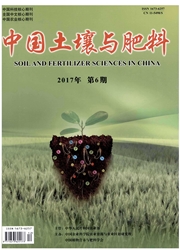

 中文摘要:
中文摘要:
本研究选取浑善达克沙地典型区正镶白旗为研究对象,应用GIS空间分析功能,从坡度的角度分析该旗土地荒漠化的变化特征,分析结果如下:正镶自旗土地的荒漠化程度的大小与坡度有关,且在1级处各个类型的荒漠化土地所占比重均比较大,均在79%以上,在2-7级处中度荒漠化以下程度的荒漠化土地所占比重比较大;随着坡度的增加,荒漠化土地所占比重减少,荒漠化程度降低,所以正镶白旗在进行荒漠化防治时重点关注坡度较小的地区;正镶白旗坡度为1级、3级和4级荒漠化的土地年际波动程度较大,且主要是中度荒漠化程度以下的荒漠化土地发生了变化,在2级、5级、6级和7级荒漠化的土地年际波动程度小,所以在进行荒漠化防治工作时,重点在坡度为1级、3级和4级的地方;1989-2007年,浑善达克沙地典型区正镶白旗土地整体是荒漠化程度高的土地类型向荒漠化程度低的土地类型转化,以荒漠化逆转为主,主要发生在坡度为1级和2级处,但土地荒漠化的程度仍然很严重。
 英文摘要:
英文摘要:
Taking Zhengxiangbaiqi region in the classical sand land Hunshandake as the study area, and using the spatial analysis function o of CIS to analyze the change characteristics of desertification, the results are as followed: the degree of desertification in Zhengxiangbaiqi region has a deep relationship with the slope, and in the grade one of desertification land of each types are relatively in large proportion, all covering more than 79%; in the grade two to seven, moderate desertification below are relatively in large proportion; with the slope increasing, the areas of desertification and the degrees are both decreasing. Thus when taking the measures to prevent the desertification, we should focus on the smaller slope areas. The grade one, three and four of desertification changed much, main including the types of moderate below. While the grade two, five, six and seven of desertification changed little, so we should pay more attention to the areas of grade one, three and four when carrying out the prevent work. From 1989 to 2007, the type of desertification in the Zhengxiangbaiqi region in the classical sand land Hunshandake mainly changeed from high degree to low degree, and occurring reversed desertification mainly in the grade one and two, but the desertification is still very serious.
 同期刊论文项目
同期刊论文项目
 同项目期刊论文
同项目期刊论文
 Verification of environmental improvement in Duolun county through analyzing land use/cover change p
Verification of environmental improvement in Duolun county through analyzing land use/cover change p 期刊信息
期刊信息
